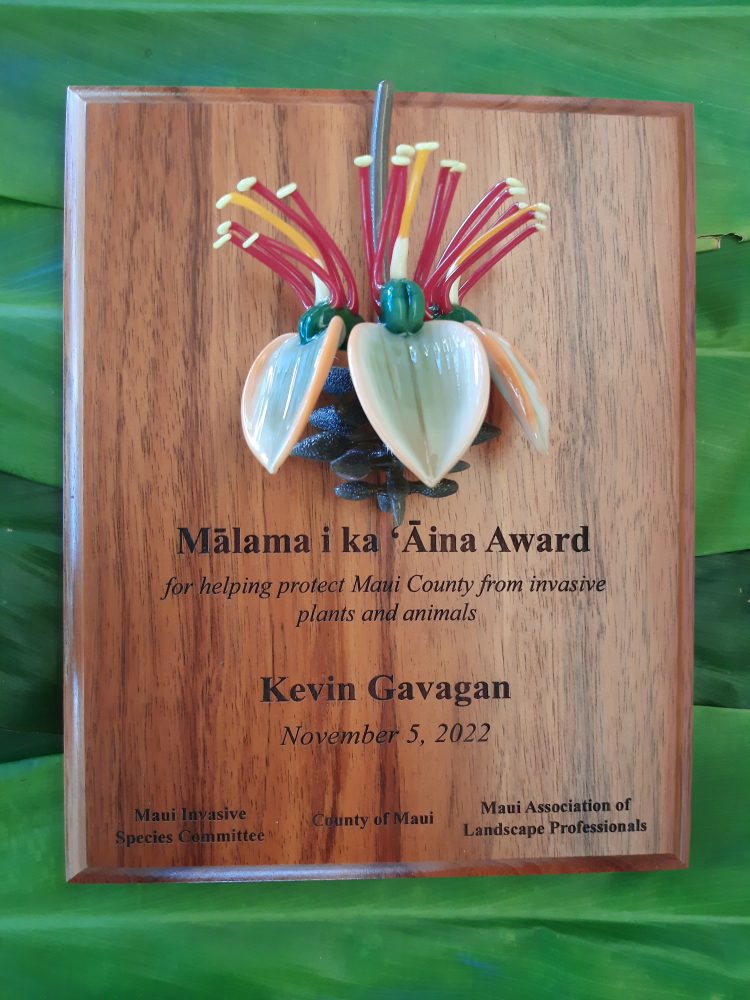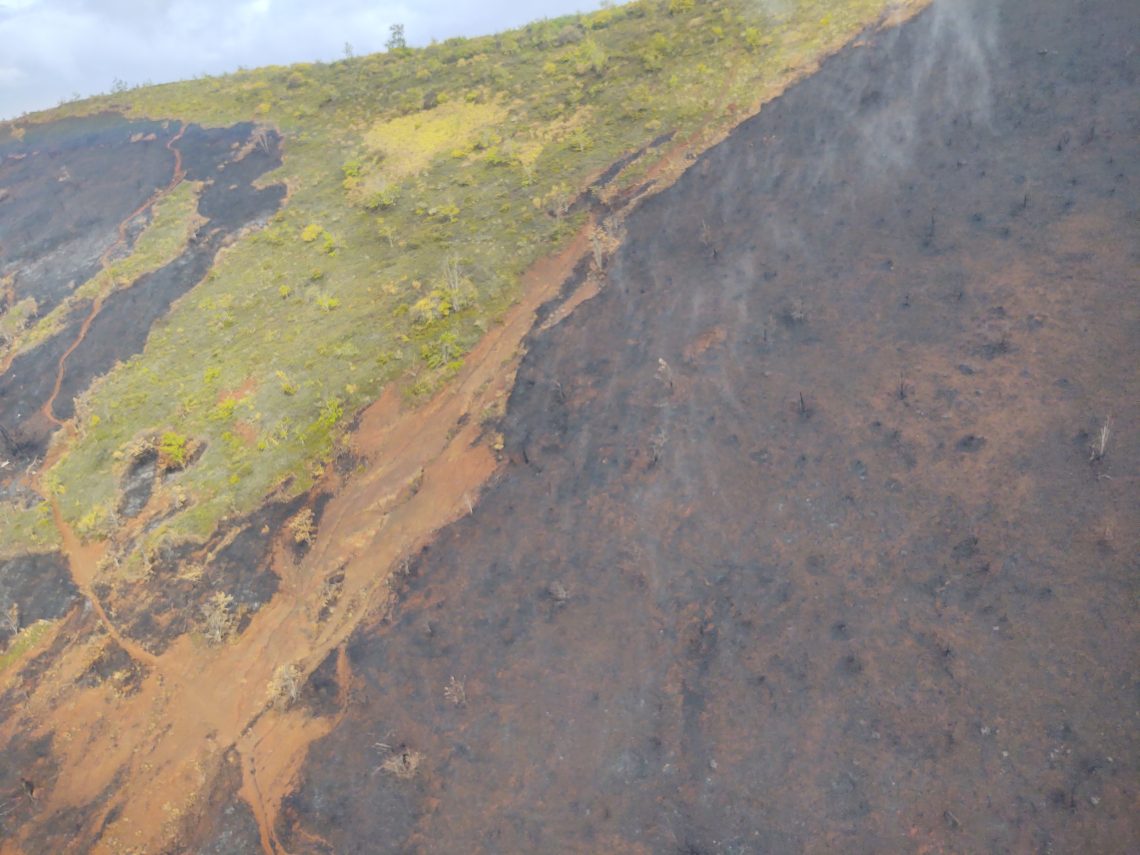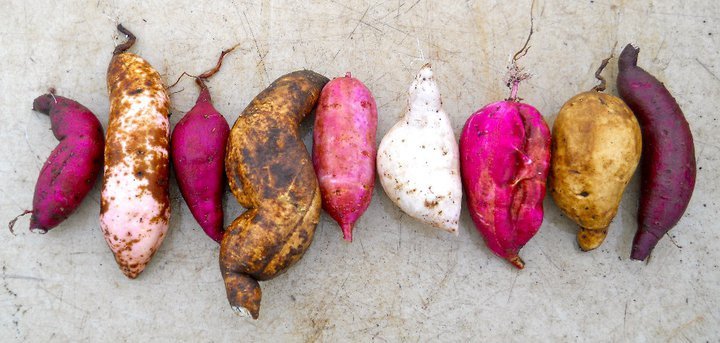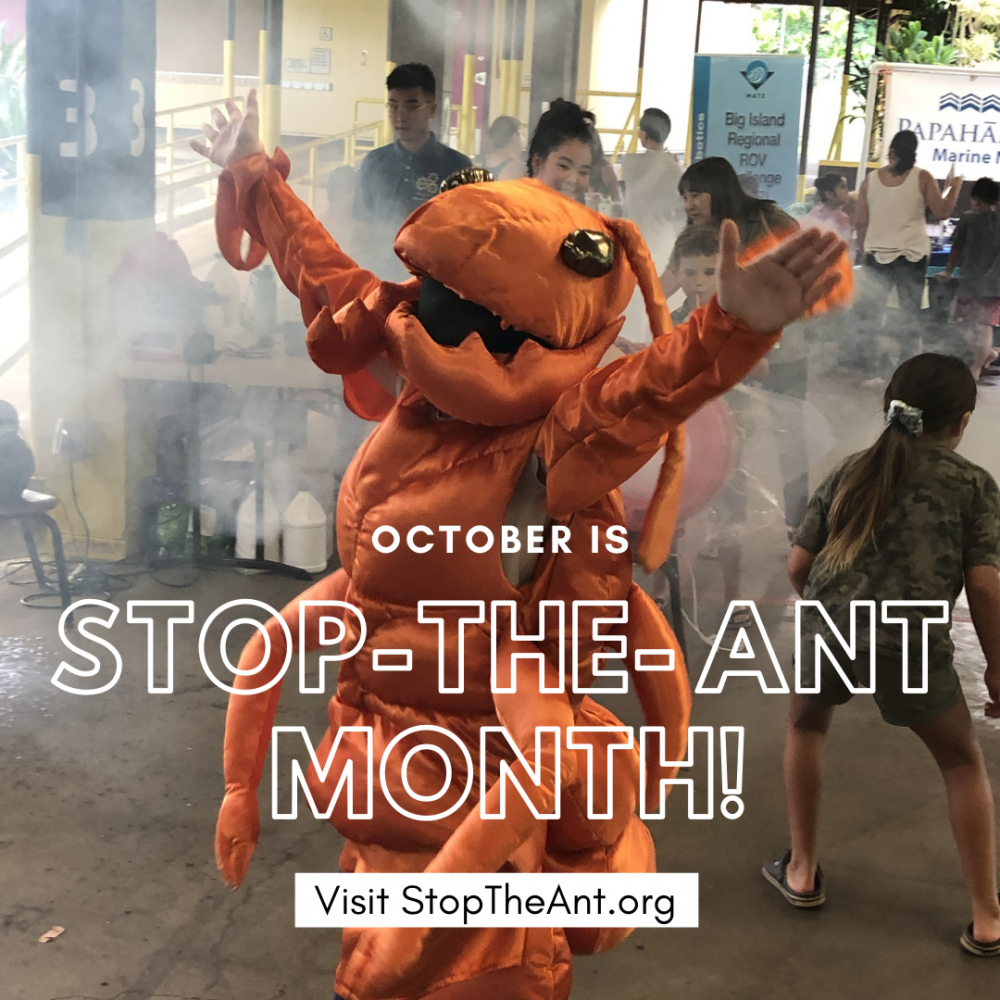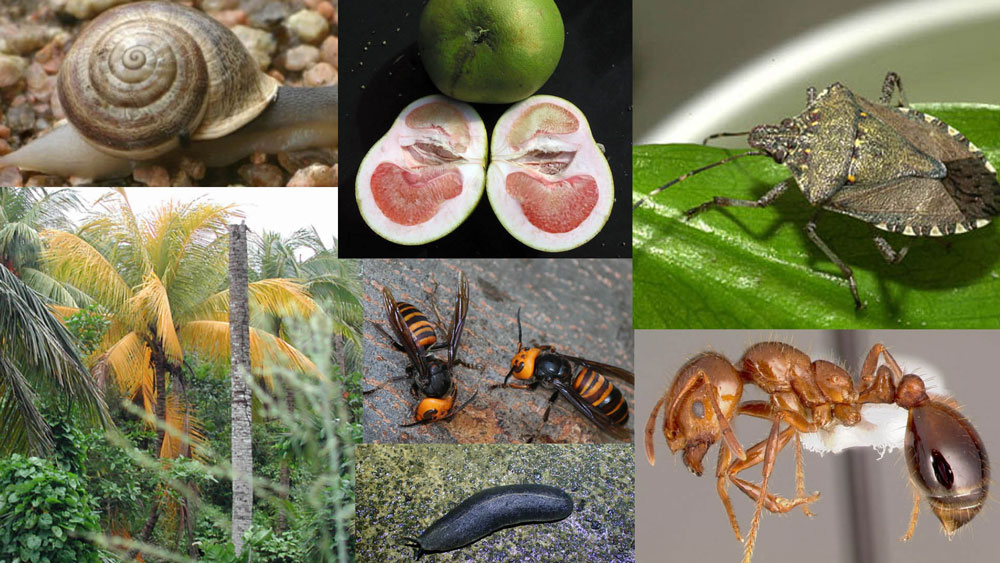Kevin Gavagan, Assistant Director of Engineering at Four Seasons Resort Maui at Wailea, is the 2022 recipient of the Mālama…
Read More
2022
Invasive species can cause native ecosystems to go up in smoke
In early November, a wildfire ripped through nearly 2,100 acres of parched land in West Maui. The fire blazed across…
Read More
The Sweet History of ʻUala: A Staple Food to Give Thanks For
A year-round staple in our islands will soon take center stage on many Thanksgiving dessert tables. The sweet potato is…
Read More
Citizen Science Can Help Stop the Ant
Citizen scientists have been key to finding most of the little fire ant (LFA) populations on Maui. Without their reports,…
Read More
New training helps nurseries be on the lookout for invasive species
Hawaiʻi is home to plant and animal species found nowhere else. For millions of years, new arrivals would establish in…
Read More
